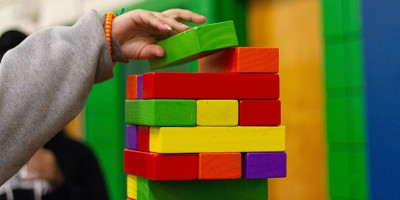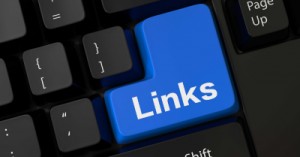When educators teach intentionally, they are deliberate, purposeful and thoughtful in their decisions and action. Intentionality can be used to create learning environments, plan learning interactions and also document children’s learning. The following article provides information on Intentional Environments, Intentional Interactions, Intentional Strategies and more.
The EYLF describes intentional teaching as “the exact opposite of teaching by rote or continuing with traditions simply because things have ‘always’ been done that way”.
Intentional Environments
To build intentional environments, educators can use strategies like:
Positioning – this involves placing specific objects in relation to each other or to people. You might put materials together that are not usually combined, for example, clay with wooden blocks, or you might suggest a particular activity by what you put together. For example positioning cut flowers, vases, scissors and string suggest a flower decorating activity; similarly put together toy dogs, ropes and blankets and then let children use their imagination to plan their own activities. you can also add a child’s favourite toy to a specific area to encourage children’s participation in a specific experience like music or encourage children to combine materials or activities such as drawing and block building.
Collecting - Gathering things together might be performed by children and/or teachers. This involves making groups of objects based on certain criteria like colour, size or physical properties for example, objects that can be rolled or bounced.
Scheduling time – educators can show intentionality in scheduling by prioritising or extending particular learning activities, for example, if a place has been having a rainy spell, the educator might extend outdoor play on a day of fine weather. Other aspects of this type of intentionality involve making time for planned experiences and interactions, like a balance of high and low-energy activities over the day or a mix of individual and group activities.
Intentional Interactions
To practise intentional teaching interactions, educators can use a wide variety of strategies including:
Encouragement – this involves reassuring and supporting a child when they are having difficulties; for example, if a child is unable to build a tower with blocks and is feeling frustrated, the educator can offer encouragement to motivate them to keep trying or to transform the disappointment into a satisfying outcome.
Facilitation – Through this educators make the learning process easier for children with the thoughtful use of equipment, time, materials, space, people and interactions. For example, an educator can create opportunities for social skills practice by planning a game or group activity.
Positioning yourself – Educators can be highly intentional in the way they place themselves vis-as-vis individuals, groups or objects with the ultimate aim of supporting children’s learning. For example, when a child is engrossed in the independent effort, the educator might stand but at a discrete distance as not to hover around. On another occasion like when comforting a distressed child, an educator may offer eye-to-eye contact, cuddles and smiles.
Grouping – this involves intentionally thinking deciding how and when to bring children together to assist their learning, for activities such as group discussion and collaboration. Thus an educator may decide to group for water play a child competent in pouring and scooping with another who is still learning to do the same.
Documentation – This provides children with a written or pictorial record of previous experiences and learning that can support them in revisiting or extending that learning. One way to practice intentionality in documentation is to reflect on the ‘why’ of the documentation, and not just the ‘what’ and ‘how’. For example, “why did I choose the learning journey and not photos of her construction project to record Ruby’s understanding of a numeracy skill like one-to-one correspondence”?
Listening – When educators listen intentionally, they pay attention to children, concentrate on and think about what children are saying and communicating through their non-verbal communication. Such listening is evident when an educator waits a few seconds before responding to a child or uses reflective questions to expand and extend thinking, like upon being told by a child that they have got a new pet, the educator thinks for a while and then “What do you like best about having a pet?”
Description – as a teaching strategy, description involves using words to help children notice or picture how something or someone looks, feels, sounds, tastes or moves. Used intentionally, descriptions can support children to notice and understand increasingly more complex and detailed distinctions between people, places and things. For example, on a nature walk, an educator can support children’s sensory experiences of leaves, mulch, mud, pebbles and bark with words that describe textures like dry, wet, hard, grainy, squishy and so on.
Modelling – This involves intentionally presenting children with examples of the dispositions, actions, attitudes and values which are valued in the setting and community. For example, in order to minimise fussy eating, an educator could model healthy eating practices in the care setting or encourage the family to eat together so that children see their parents eat some of the things served to them as well.
Demonstrating – This intentional strategy not only involves educators modelling a task but goes further by breaking it down into steps and having educators use clear language to describe the actions. An example of a demonstration is when an educator shows children how to use tools like a brush or scissors as well as materials like paint or glue for artwork. Demonstrations can also be used to extend or enrich children’s play, for example, by demonstrating using a recipe book in the family corner.
Questioning - Questions are used to seek information or an increased understanding of something or someone. As an intentional teaching strategy, open questions are more effective than closed ones when finding out what children are thinking about and how they are making sense of the surrounding world. when a child is busy in an exciting experiment with pouring and scooping in the sensory table, instead of asking “what colour is that scoop” or “how many times will you use that scoop to empty the pail”, ask open-ended questions like “What can you tell me about the scoops?” or “what does the scoop remind you of?”
Suggestion – This involves offering children advice, ideas and recommendations about what to do next. Remember though that children should have the freedom to choose whether or not to follow a suggestion. For example, if a child is struggling to find a piece to complete a jigsaw puzzle, you can phrase a suggestion as, “Can you find something green out here?”
Telling – this intentional strategy uses a verbal account or description to explain to children what is happening or what should happen. Though this allows little opportunity for children’s participation, but it can support learning in specific situations. For example, telling may be useful to explain how children should play on swings in the playground.
Prompting recall – When helping a child reinforce concepts, solve problems, report on observations or develop concentration, one of the most useful intentional strategies is to ask them to remember something. For example, if a child is trying to find a way to build a bridge across the sand caste moat, you can ask a child “What happened when you tried using a piece of string/stick/log?’ or ‘What do you remember about…?
Feedback – this strategy involves providing information (before, during and after an experience) about that experience, which can be either verbal – like a comment on how the child approached the task – or non-verbal, like a smile to show appreciation of the child’s efforts. For example, if a child has, after a good deal of trying, finally succeeded to sequence up to ten, you can clap to show appreciation of their persistence or say, “Looks like your hard work paid off”!
Scaffolding – Educators practice scaffolding when they offer temporary guidance and support to help a child become more competent in a task. This support is given by intentionally using a combination of teaching techniques like questioning, encouraging, prompting recall, describing, suggesting and modelling. For instance, “You added blue and white paint to mix together and got a light blue, but you wanted to get purple. What other colour might you add to the blue? Do you remember when we read the story about the mice that mixed colours together – did they mix colours to make purple? Let’s get the book from our library to see.”
Shared problem-solving – When educators intentionally work with children to try to solve a problem together, learners are able to demonstrate shared attention and shared understanding or intersubjectivity. For example, when reading a story with children, pause at certain points in the narrative where the major characters come upon obstacles. Ask your learners if they can think of ways to solve the character’s problems. Invite a variety of suggestions and discuss possible consequences. Look for ways to relate the character’s dilemmas to events in the children’s own lives so that they have a deeper understanding of problem-solving scenarios.
Co-construction – this strategy involves forming meaning and building knowledge about the world in negotiation with children. Educators intentionally listen to and understand the meaning of objects and events for children, rather than just transmit facts about those objects and events.
When educators practice intentional teaching, they actively promote children’s learning through worthwhile and challenging experiences and interactions that foster high-level thinking skills. Intentional teaching means educators have clear learning goals for the children.
Further Reading
Intentional Teaching In Early Childhood Settings - The following provides information on Intentional Teaching Definition, Intentional Teaching Strategies, Intentional Teaching Examples and Benefits Of Intentional Teaching.
Intentional Teaching Examples In QKLG - Intentional Teaching examples are provided for each key focus and significant aspect of learning.
References:
Strategies For Intentional Teaching, The Education Hub
Belonging, Being and Becoming, ACECQA







 Here is the list of the EYLF Learning Outcomes that you can use as a guide or reference for your documentation and planning. The EYLF
Here is the list of the EYLF Learning Outcomes that you can use as a guide or reference for your documentation and planning. The EYLF The EYLF is a guide which consists of Principles, Practices and 5 main Learning Outcomes along with each of their sub outcomes, based on identity,
The EYLF is a guide which consists of Principles, Practices and 5 main Learning Outcomes along with each of their sub outcomes, based on identity, This is a guide on How to Write a Learning Story. It provides information on What Is A Learning Story, Writing A Learning Story, Sample
This is a guide on How to Write a Learning Story. It provides information on What Is A Learning Story, Writing A Learning Story, Sample One of the most important types of documentation methods that educators needs to be familiar with are “observations”. Observations are crucial for all early childhood
One of the most important types of documentation methods that educators needs to be familiar with are “observations”. Observations are crucial for all early childhood To support children achieve learning outcomes from the EYLF Framework, the following list gives educators examples of how to promote children's learning in each individual
To support children achieve learning outcomes from the EYLF Framework, the following list gives educators examples of how to promote children's learning in each individual Reflective practice is learning from everyday situations and issues and concerns that arise which form part of our daily routine while working in an early
Reflective practice is learning from everyday situations and issues and concerns that arise which form part of our daily routine while working in an early Within Australia, Programming and Planning is reflected and supported by the Early Years Learning Framework. Educators within early childhood settings, use the EYLF to guide
Within Australia, Programming and Planning is reflected and supported by the Early Years Learning Framework. Educators within early childhood settings, use the EYLF to guide When observing children, it's important that we use a range of different observation methods from running records, learning stories to photographs and work samples. Using
When observing children, it's important that we use a range of different observation methods from running records, learning stories to photographs and work samples. Using This is a guide for educators on what to observe under each sub learning outcome from the EYLF Framework, when a child is engaged in
This is a guide for educators on what to observe under each sub learning outcome from the EYLF Framework, when a child is engaged in The Early Years Learning Framework describes the curriculum as “all the interactions, experiences, activities, routines and events, planned and unplanned, that occur in an environment
The Early Years Learning Framework describes the curriculum as “all the interactions, experiences, activities, routines and events, planned and unplanned, that occur in an environment


